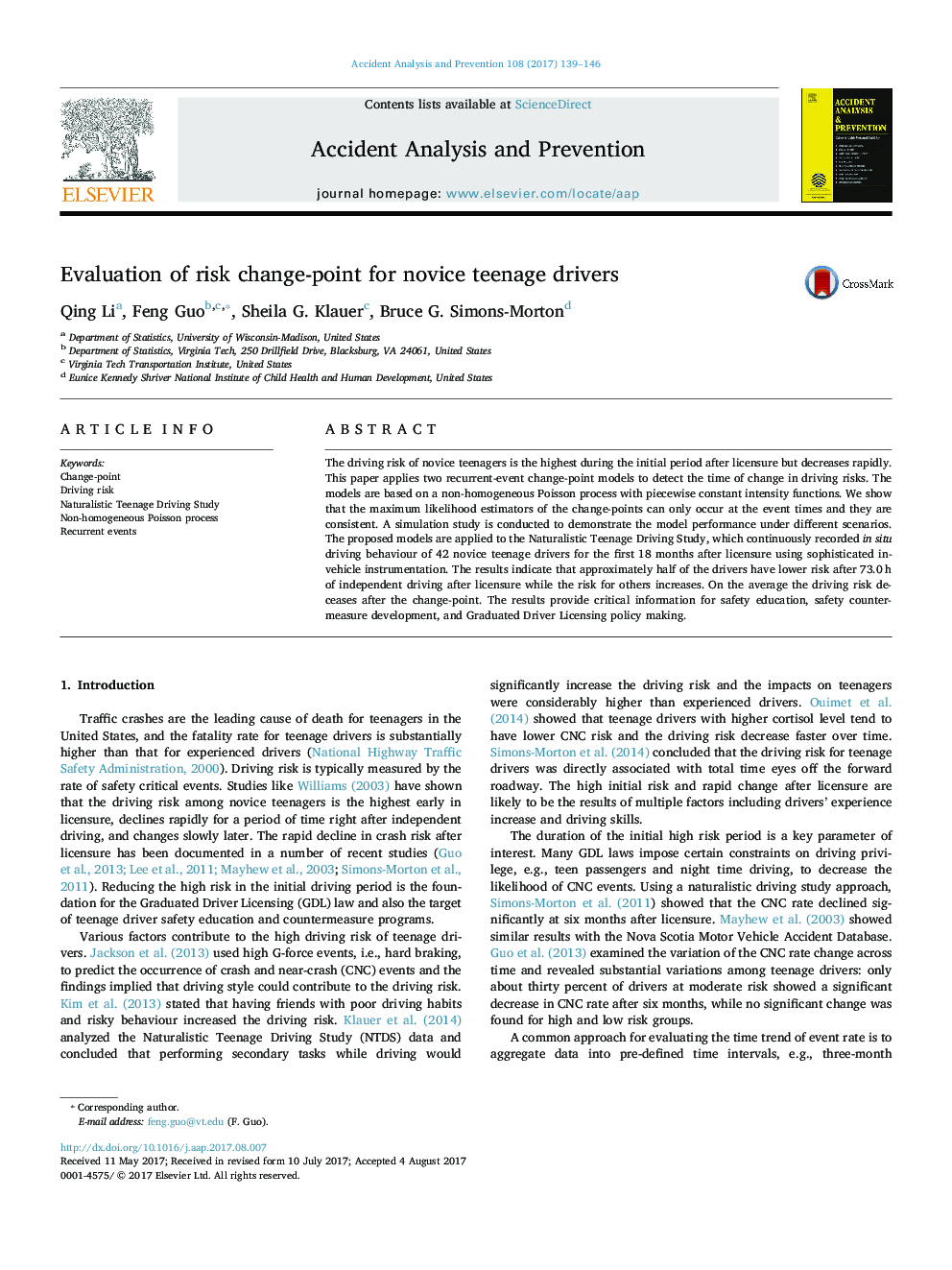| Article ID | Journal | Published Year | Pages | File Type |
|---|---|---|---|---|
| 4978515 | Accident Analysis & Prevention | 2017 | 8 Pages |
Abstract
The driving risk of novice teenagers is the highest during the initial period after licensure but decreases rapidly. This paper applies two recurrent-event change-point models to detect the time of change in driving risks. The models are based on a non-homogeneous Poisson process with piecewise constant intensity functions. We show that the maximum likelihood estimators of the change-points can only occur at the event times and they are consistent. A simulation study is conducted to demonstrate the model performance under different scenarios. The proposed models are applied to the Naturalistic Teenage Driving Study, which continuously recorded in situ driving behaviour of 42 novice teenage drivers for the first 18 months after licensure using sophisticated in-vehicle instrumentation. The results indicate that approximately half of the drivers have lower risk after 73.0Â h of independent driving after licensure while the risk for others increases. On the average the driving risk deceases after the change-point. The results provide critical information for safety education, safety countermeasure development, and Graduated Driver Licensing policy making.
Related Topics
Physical Sciences and Engineering
Chemical Engineering
Chemical Health and Safety
Authors
Qing Li, Feng Guo, Sheila G. Klauer, Bruce G. Simons-Morton,
